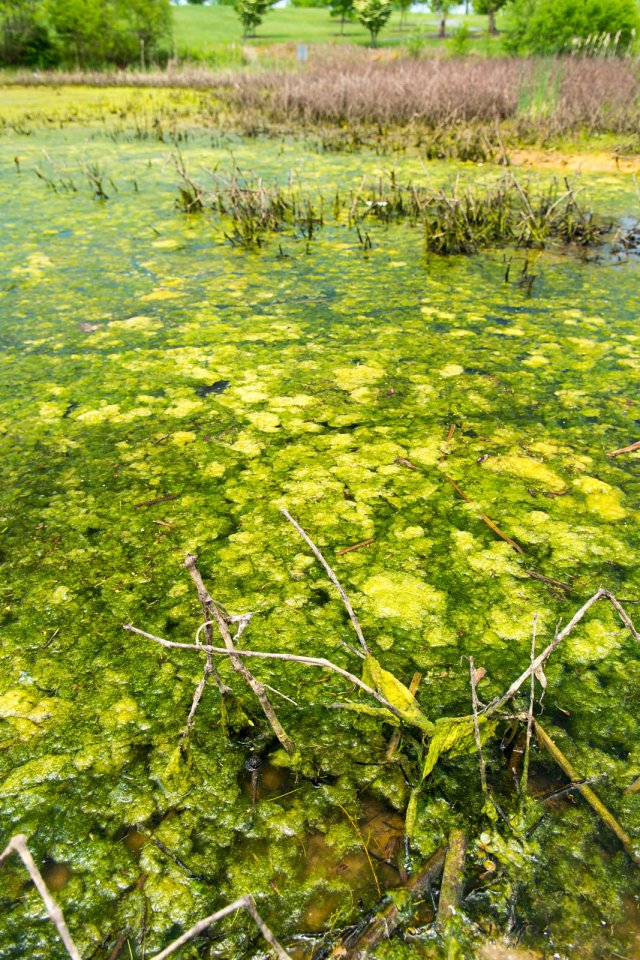Indicators: Phosphorus
What is phosphorus?
Phosphorus, like nitrogen, is a critical nutrient required for all life. The most common form of phosphorus used by biological organisms is phosphate (PO4), which plays major roles in the formation of DNA, cellular energy, and cell membranes (and plant cell walls). Phosphorus is a common ingredient in commercial fertilizers.

Why is it important to evaluate phosphorus?
Phosphorus is particularly important as a contributor to freshwater, coastal, and estuarine algal blooms. Too much phosphorus can stimulate excess growth of algae, which leads to low dissolved oxygen levels, potential for harmful algal toxins, blockage of sunlight needed by organisms and plants in the water and degraded habitat conditions for benthic macroinvertebrates and other aquatic life. Sources of excess phosphorus to rivers and streams, lakes, and coastal waters include fertilizers, runoff from urban areas, leaking septic systems or discharges from wastewater treatment plants.
What can phosphorus tell us about the condition of water?
In appropriate quantities, phosphorus can be used by vegetation and soil microbes for normal growth. However, in excess quantities, phosphorus can lead to water quality problems such as eutrophication and harmful algal growth. Some aquatic resources, such as wetlands, naturally serve as sinks for phosphorus found in sediments or dissolved in water. However, since phosphorus generally occurs in small quantities in the natural environment, even small increases can negatively affect water quality and biological condition.
How is this indicator used in NARS?
Four surveys collect phosphorus data which is available on the NARS data page. Below the table you access assessment information in current reports.
| NLA | NRSA | NCCA | NWCA | Indicator Type |
|---|---|---|---|---|
| X | X | X | X | Core Indicator |
| Research Indicator |
National Lakes Assessment Web Report- Phosphorus Results
National Rivers and Streams Assessment Web Report- Phosphorus Results
National Coastal Condition Assessment Web Report- results coming soon
National Wetland Condition Assessment Web Report - Phosphorus Results
